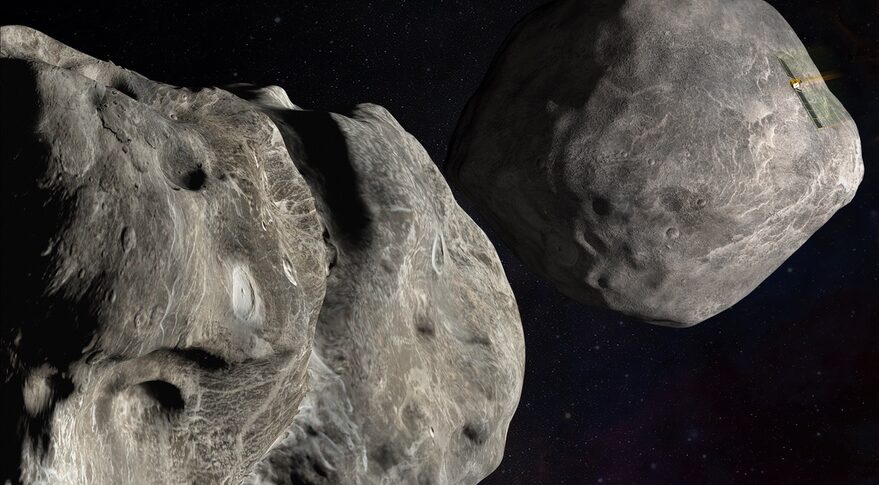
On September 26th, a NASA spacecraft collided with a moon orbiting a near-Earth asteroid. However, it is not a tragic accident, it is a demonstration of an experiment that could be used one day to protect Earth.
NASA’s Double Asteroid Redirection Test (in short DART) spacecraft hit Dimorphos, an asteroid around 160 meters across orbiting the larger asteroid Didymos. DART’s final speed is 6.5 kilometers per second and was confirmed hit when its signal was lost at mission control at the Johns Hopkins University Applied Physics Lab (APL).
The test went very well as the route is the same as the calculation, and no issues were reported in the last hour. The spacecraft successfully planned the hit only 17 meters from the center of the asteroid.
DART launched last November as NASA’s first planetary defense mission. It was designed to make a “kinetic impact” with the target asteroids that might cause collision damage to the Earth.
Nancy Chabot, coordination lead for DART at APL, claimed they had put up all their optical and radar instruments around the world to make this first planetary defense mission worldwide open and worthy.
The change of orbit is still under measurement, but the result will be useful for any future missions. The model of this test shows tremendous potential outcomes based on the composition, structure, and shape of Dimorphos.
Although the shapes and sizes of the asteroids are variable, the data from DART impact can help refine models. It serves the purpose of building more and more accurate data for future testing.
Using a spacecraft to “smash” an asteroid reminds me that in many films, the government always intends to nuke the outer space threats. Using a spacecraft to do that would be safer and more accurate.
Source Picture & Article: DART collides with asteroid in planetary defense test by Jeff Foust